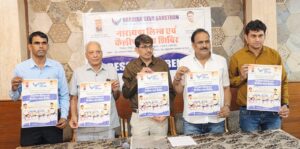
The ongoing farmers’ protest has become a focal point of national attention, with demonstrators from Punjab and Haryana intensifying their agitation to press for demands. Large groups of farmers have congregated at key entry points to Delhi, including the Shambhu border, leading to widespread traffic disruptions. In response, the Supreme Court is set to hear a Public Interest Litigation (PIL) addressing the protests’ impact.
The road blockades caused by the farmers’ agitation have disrupted the daily lives of commuters, prompting the filing of a PIL in the apex court. The petition, submitted on Saturday, alleges illegal encroachment on highways by protesting farmers and their unions. It seeks judicial intervention to direct Punjab and Haryana authorities, along with the Union government, to ensure that national highways and railway tracks remain accessible.
A bench comprising Justice Suryakant and Justice Manmohan will review the case, with a particular focus on reopening the Shambhu border, a critical transit point affected by the protests.
The Shambhu border has emerged as a hotspot in the ongoing unrest. On Sunday, tensions escalated when 101 farmers from Punjab attempted to march on foot toward Delhi. Security personnel initially welcomed them with tea and biscuits as a goodwill gesture. However, the situation turned confrontational when the farmers refused to turn back, prompting the police to use tear gas shells.
The confrontation resulted in injuries to four protesters and led the farmers to temporarily halt their march to regroup and plan further strategies.
The Supreme Court’s involvement introduces a new dimension to the farmers’ protest, highlighting the tension between the right to peaceful assembly and the disruption caused to the general public. The PIL underscores the urgency of addressing the blockades while respecting democratic principles.
The court’s decision is anticipated to have significant implications, potentially setting a precedent for how large-scale protests are managed in the future.
This development underscores the complexity of balancing civil liberties with public convenience, as the nation watches for the court’s ruling on this pivotal issue.






